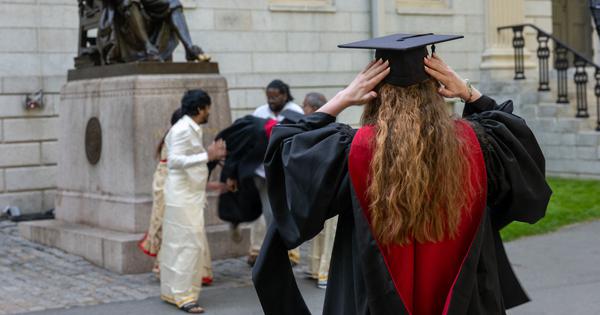Declining international student enrollment poses significant economic challenges for U.S. higher education institutions.
The U.S. has implemented strict visa restrictions and canceled numerous appointments at consulates and embassies in countries such as India, China, and Nigeria. This has led to a projected decrease in international student arrivals. Specifically, estimates indicate that American college campuses may see 30% to 40% fewer international students in the fall of 2025 compared to the previous academic year. According to NAFSA: Association of International Educators, a nonprofit focused on international education, and JB International, a for-profit educational technology firm, around 150,000 fewer international students are anticipated to arrive due to these new visa restrictions.
Data from the Institute for International Education highlights that there were over 1.1 million international students in the U.S. during the 2023-2024 academic year, with a significant portion coming from China and India. The decline in international student numbers could potentially result in a loss of approximately $7 billion for the U.S. economy in the 2025-2026 school year, according to NAFSA’s estimates. The economic impact is substantial, as for every three international students in the U.S., one job is created or supported, thanks to the average spending of $35,000 per student on housing, food, transportation, and other local expenses.
Historically, international students have been coming to the U.S. since the early 20th century, significantly contributing to the educational landscape. Philanthropists like the Carnegie and Rockefeller families played pivotal roles in creating fellowships that facilitated these exchanges. Organizations like the Institute for International Education have acted as intermediaries between foreign students and American institutions since 1919. Following World War II, the number of international students steadily increased as travel became more accessible and affordable. From just 26,000 foreign students in the 1949-1950 school year, enrollment surged to over 1 million by the 2015-2016 school year, reflecting the growing global interconnectedness in education.
Despite this growth, the current percentage of international students in U.S. higher education remains modest compared to other countries. For instance, during the 2024-2025 school year, international students comprised 38% of total university enrollment in Canada and 31% in Australia, contrasting with the 6% in the U.S. as of the 2023-2024 academic year. Recent political actions, including the invocation of the 1952 Immigration and Nationality Act by President Donald Trump, have further complicated the situation. This act allows for the expulsion of foreign students deemed threats to U.S. interests, leading to the revocation of visas for thousands of students.
The administration has also announced a travel ban that restricts entry from 19 countries, predominantly in the Middle East and Africa, and proposed limiting the duration of foreign students’ stay in the U.S. to four years. This proposed change would reduce the current 60-day grace period that allows students to remain in the U.S. after graduation without a work visa. Notably, institutions like New York University and Columbia University have historically hosted a large number of international students, but the recent restrictions have raised concerns about their financial viability and ability to attract future international scholars.
As institutions adapt to these changes, colleges and universities across the country, including those in less urban areas, are likely to experience significant financial repercussions from the declining international student population. The anticipated drop in enrollment not only threatens the economic contributions of these students but also poses a long-term challenge to the diversity and global engagement of American higher education.








